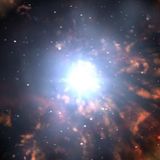RECENT ARTICLES
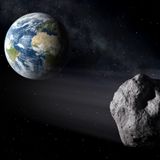
Chinese Asteroid Mining Robot Due to Launch in November
Does it seem like science is catching up with science fiction? Sometimes it does. Especially when there’s an announcement like this one.A Chinese company says that they’ll be launching an asteroid-mining robot by November.Origin Space is a private company based in Beijing. Though they’re calling this an “asteroid mining robot,” it’s really a pre-cursor mission to actual mining. In reality, NEO-1 as it’s called, will be testing technologies aimed at the eventual mining of asteroids.According to multiple news sources, NEO-1 will be launched on a Chinese Long March rocket as a secondary...…Does it seem like science is catching up with science fiction? Sometimes it does. Especially when there’s an announcement like this one.A Chinese company says that they’ll be launching an asteroid-mining robot by November.Origin Space is a private company based in Beijing. Though they’re calling this an “asteroid mining robot,” it’s really a pre-cursor mission to actual mining. In reality, NEO-1 as it’s called, will be testing technologies aimed at the eventual mining of asteroids.According to multiple news sources, NEO-1 will be launched on a Chinese Long March rocket as a secondary...WW…
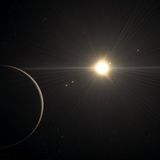
Exoplanetary System Found With 6 Worlds in Orbital Resonance
200 light-years away from Earth, there’s a K-type main-sequence star named TOI (TESS Object of Interest) 178. When Adrian Leleu, an astrophysicist at the Center for Space and Habitability of the University of Bern, observed it, it appeared to have two planets orbiting it at roughly the same distance. But that turned out to be incorrect. In fact, six exoplanets orbit the smallish star.And five of those six are locked into an unexpected orbital configuration.Five of the planets are engaged in a rare rhythmic, dance around the star. In astronomical terms, they’re in an unusual , which means...…200 light-years away from Earth, there’s a K-type main-sequence star named TOI (TESS Object of Interest) 178. When Adrian Leleu, an astrophysicist at the Center for Space and Habitability of the University of Bern, observed it, it appeared to have two planets orbiting it at roughly the same distance. But that turned out to be incorrect. In fact, six exoplanets orbit the smallish star.And five of those six are locked into an unexpected orbital configuration.Five of the planets are engaged in a rare rhythmic, dance around the star. In astronomical terms, they’re in an unusual , which means...WW…

Astronomers Find a Planet Like Jupiter, but It Doesn't Have any Clouds
Can you picture Jupiter without any observable clouds or haze? It isn’t easy since Jupiter’s latitudinal cloud bands and its Great Red Spot are iconic visual features in our Solar System. Those features are caused by upswelling and descending gas, mostly ammonia. After Saturn’s rings, Jupiter’s cloud forms are probably the most recognizable feature in the Solar System.Now astronomers with the Center for Astrophysics | Harvard & Smithsonian (CfA) have found a planet similar in mass to Jupiter, but with a cloud-free atmosphere.These planets are scarce, and astronomers think only about 7%...…Can you picture Jupiter without any observable clouds or haze? It isn’t easy since Jupiter’s latitudinal cloud bands and its Great Red Spot are iconic visual features in our Solar System. Those features are caused by upswelling and descending gas, mostly ammonia. After Saturn’s rings, Jupiter’s cloud forms are probably the most recognizable feature in the Solar System.Now astronomers with the Center for Astrophysics | Harvard & Smithsonian (CfA) have found a planet similar in mass to Jupiter, but with a cloud-free atmosphere.These planets are scarce, and astronomers think only about 7%...WW…

Astronomers Have Found Planet 9... in Another Solar System
Even with all we’ve learned about our own Solar System, especially in the last couple of decades, researchers still face many unanswered questions. One of those questions regards the so-called . The Planet Nine hypothesis states that there’s a massive planet in our Solar System orbiting at a great distance from the Sun.Nobody’s ever observed the hypothesized planet; the evidence for it lies in a cluster of bodies that orbit the Sun 250 times further out than Earth does. These objects are called e-TNOs, for . According to the hypothesis, Planet Nine’s gravity is responsible for the unusual...…Even with all we’ve learned about our own Solar System, especially in the last couple of decades, researchers still face many unanswered questions. One of those questions regards the so-called . The Planet Nine hypothesis states that there’s a massive planet in our Solar System orbiting at a great distance from the Sun.Nobody’s ever observed the hypothesized planet; the evidence for it lies in a cluster of bodies that orbit the Sun 250 times further out than Earth does. These objects are called e-TNOs, for . According to the hypothesis, Planet Nine’s gravity is responsible for the unusual...WW…
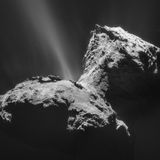
Solid Phosphorus has been Found in Comets. This Means They Contain All the Raw Elements for Life
Did comets deliver the elements essential for life on Earth? It’s looking more and more like they could have. At least one comet might have, anyway: 67P/Churyumov–Gerasimenko.A new study using data from the ESA’s mission shows that the comet contains the life-critical element phosphorous.Researchers from the University of Turku in Finland led this research. The lead author of the study is Esko Gardner, an astrophysicist and software engineer. The title of the work is “,” and it’s published in Monthly Notices of the Royal Astronomical Society.The raw elements for life are known as , which...…Did comets deliver the elements essential for life on Earth? It’s looking more and more like they could have. At least one comet might have, anyway: 67P/Churyumov–Gerasimenko.A new study using data from the ESA’s mission shows that the comet contains the life-critical element phosphorous.Researchers from the University of Turku in Finland led this research. The lead author of the study is Esko Gardner, an astrophysicist and software engineer. The title of the work is “,” and it’s published in Monthly Notices of the Royal Astronomical Society.The raw elements for life are known as , which...WW…
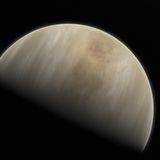
Astronomers Challenge Recent Findings About Venus. "No Statistically Significant Detection of Phosphine"
In September, a team of scientists reported finding phosphine in the upper atmosphere of Venus. Phosphine can be a biomarker and is here on Earth. But it’s also present on Jupiter, where it’s produced abiotically. The discovery led to conjecture about what kind of life might survive in Venus’ atmosphere, continually producing the easily-degraded phosphine.The authors of that study were circumspect about their own results, saying that they hope someone can determine a source for the phosphine, other than life.Now a new study says that the original phosphine detection is not statistically...…In September, a team of scientists reported finding phosphine in the upper atmosphere of Venus. Phosphine can be a biomarker and is here on Earth. But it’s also present on Jupiter, where it’s produced abiotically. The discovery led to conjecture about what kind of life might survive in Venus’ atmosphere, continually producing the easily-degraded phosphine.The authors of that study were circumspect about their own results, saying that they hope someone can determine a source for the phosphine, other than life.Now a new study says that the original phosphine detection is not statistically...WW…
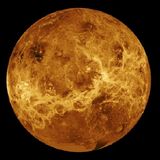
Astronomers Report They've Detected the Amino Acid Glycine in the Atmosphere of Venus
Does it feel like all eyes are on Venus these days? The discovery of the potential biomarker phosphine in the planet’s upper atmosphere last month garnered a lot of attention, as it should. There’s still some uncertainty around what the phosphine discovery means, though.Now a team of researchers claims they’ve discovered the amino acid glycine in Venus’ atmosphere.The paper announcing the finding is titled “.” The lead author is Arijit Manna, a Ph.D. Research Scholar in the Dept. of Physics at Midnapore College in West Bengal, India. The paper is at the pre-print site arxiv.org, which means...…Does it feel like all eyes are on Venus these days? The discovery of the potential biomarker phosphine in the planet’s upper atmosphere last month garnered a lot of attention, as it should. There’s still some uncertainty around what the phosphine discovery means, though.Now a team of researchers claims they’ve discovered the amino acid glycine in Venus’ atmosphere.The paper announcing the finding is titled “.” The lead author is Arijit Manna, a Ph.D. Research Scholar in the Dept. of Physics at Midnapore College in West Bengal, India. The paper is at the pre-print site arxiv.org, which means...WW…

A Strange Planet has been Found that's Smaller than Neptune But 50% More Massive
Astronomers have found another strange exoplanet in a distant solar system. This one’s an oddball because its size is intermediate between Earth and Neptune, yet it’s 50% more massive than Neptune.Astronomers have found what they call “puff planets” in other Solar Systems. Those are planets that are a few times more massive than Earth, but with radii much larger than Neptune’s. But this planet is the opposite of that: it’s much more massive than Neptune, but it also has a much smaller radius. Super-dense, not super-puffy.This oddball planet is calling into question our understanding of how...…Astronomers have found another strange exoplanet in a distant solar system. This one’s an oddball because its size is intermediate between Earth and Neptune, yet it’s 50% more massive than Neptune.Astronomers have found what they call “puff planets” in other Solar Systems. Those are planets that are a few times more massive than Earth, but with radii much larger than Neptune’s. But this planet is the opposite of that: it’s much more massive than Neptune, but it also has a much smaller radius. Super-dense, not super-puffy.This oddball planet is calling into question our understanding of how...WW…
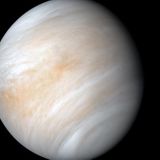
Astronomers Report That Venus' Atmosphere Contains a Building Block of Protein
Does it feel like all eyes are on these days? The discovery of the potential biomarker phosphine in the planet's upper atmosphere last month garnered a lot of attention, as it should. There's still some uncertainty around what the phosphine discovery means, though. Now a team of researchers claims they've discovered the amino acid glycine in Venus' atmosphere.The paper announcing the finding is titled ''. The lead author is Arijit Manna, a Ph.D. Research Scholar in the Dept. of Physics at Midnapore College in West Bengal, India. The paper is at the pre-print site arxiv.org, which means...…Does it feel like all eyes are on these days? The discovery of the potential biomarker phosphine in the planet's upper atmosphere last month garnered a lot of attention, as it should. There's still some uncertainty around what the phosphine discovery means, though. Now a team of researchers claims they've discovered the amino acid glycine in Venus' atmosphere.The paper announcing the finding is titled ''. The lead author is Arijit Manna, a Ph.D. Research Scholar in the Dept. of Physics at Midnapore College in West Bengal, India. The paper is at the pre-print site arxiv.org, which means...WW…
